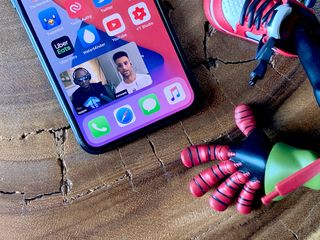
The new iPhone operating system, iOS 14, won't be officially out until the fall. But you can take it for a test drive right now thanks to Apple's public beta program.
But should you? What can you do if you don't like it and want to go back? What if you find bugs or glitches? How are you even supposed to know what's in iOS 14? That's where iMore comes in!
- How to install the iOS 14 public beta
- iOS 14 FAQ: Everything you need to know!
- How to prepare your iPhone or iPod touch for the iOS 14 public beta
- How to downgrade from a public beta
- How to update from an iOS beta to the official release
- How to report bugs and feedback on the iOS 14 public beta
- iOS 14 help and discussion forums
How to install the iOS 14 public beta
There are many great new features jam-packed into iOS 14, including Home screen widgets (finally!), App Library, unobtrusive incoming call notifications, App Clips, and a whole lot more.
If you can't wait for the official launch and are willing to test the public beta on your secondary device, here's how to enroll your device and get the beta installed.
iOS 14 FAQ: Everything you need to know!
iOS 14 was unveiled at WWDC 2020 and is currently in developer and public beta. It won't ship until this fall, but we're already fielding tons of questions about it. So, we're collecting all those questions and, better still, providing answers right here in our iOS 14 FAQ!
How to prepare your iPhone or iPod touch for the iOS 14 public beta
Before you install the public beta, you should make sure that the device you plan on putting the beta on is ready to go. This means freeing up storage space, creating backups just in case, and knowing what to do if something does go south. Before you even think about getting the public beta, make sure you've done all of these things below.
How to prepare your iPhone for the iOS 14 public beta
Master your iPhone in minutes
iMore offers spot-on advice and guidance from our team of experts, with decades of Apple device experience to lean on. Learn more with iMore!
How to downgrade from a public beta
The iOS 14 public beta is an easy way for users to try out the next generation of iPhone and iPad software. But if you need to downgrade your device back to the current version, iOS 13.5.1, that's fine. What's more, downgrading is easy: All you need is an archived backup of your device pre-beta, iTunes on your Mac or Windows PC, and to follow the steps below!
How to update from an iOS beta to the official release
If you have been running a developer or public beta of iOS, you can officially move to the public release at any point once it's available. Apple may push the update to your device automatically, but you can manually download it if you prefer.
How to send iOS 14 public beta feedback
No amount of planning or internal quality assurance in the world can equal the kind of road test that happens when millions of customers hitting your software. That's why companies large and small have betas — so that real people can help find real problems before the software officially debuts. Apple's doing just that with the iOS 14 public beta — and they've including a special Feedback app to make reporting problems easier than ever.
Other questions about the iOS 14 public beta?
Pop your questions below, or chat with one of our awesome moderators in our iOS 14 forums!
Updated July 2020: Updated for iOS 14 public beta.

○ FAQ: Apple's beta software
○ Should you run beta software?
○ iOS 14 public beta: The ultimate guide
○ iPadOS 14 public beta: The ultimate guide
○ macOS Big Sur public beta: The ultimate guide
○ iOS 14: Everything you need to know
○ iPadOS 14: Everything you need to know
○ macOS Big Sur: Everything you need to know
○ watchOS 7: Everything you need to know
○ tvOS 14: Everything you need to know
Lory is a renaissance woman, writing news, reviews, and how-to guides for iMore. She also fancies herself a bit of a rock star in her town and spends too much time reading comic books. If she's not typing away at her keyboard, you can probably find her at Disneyland or watching Star Wars (or both).
